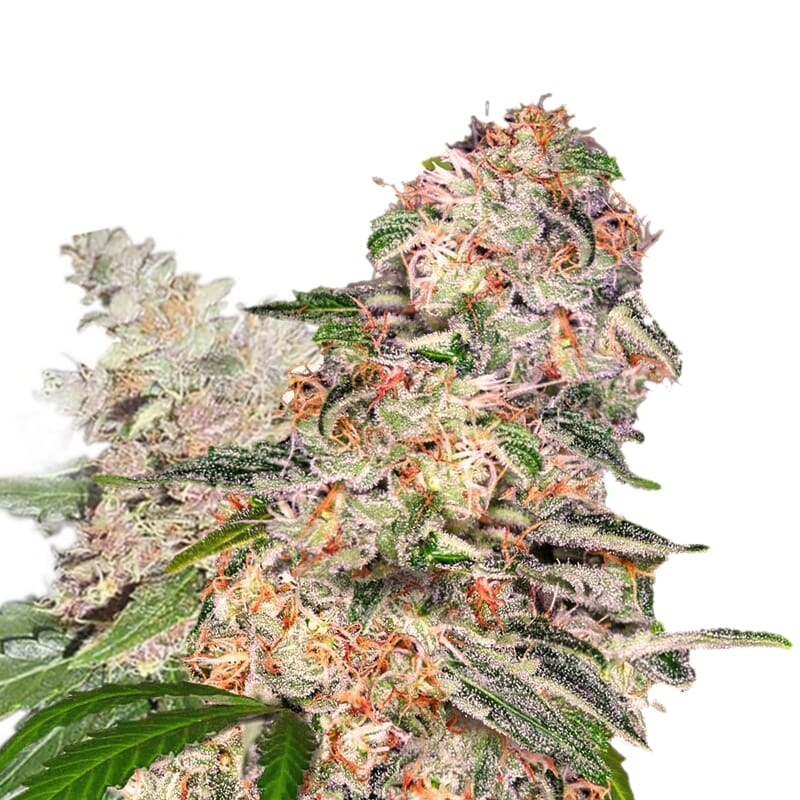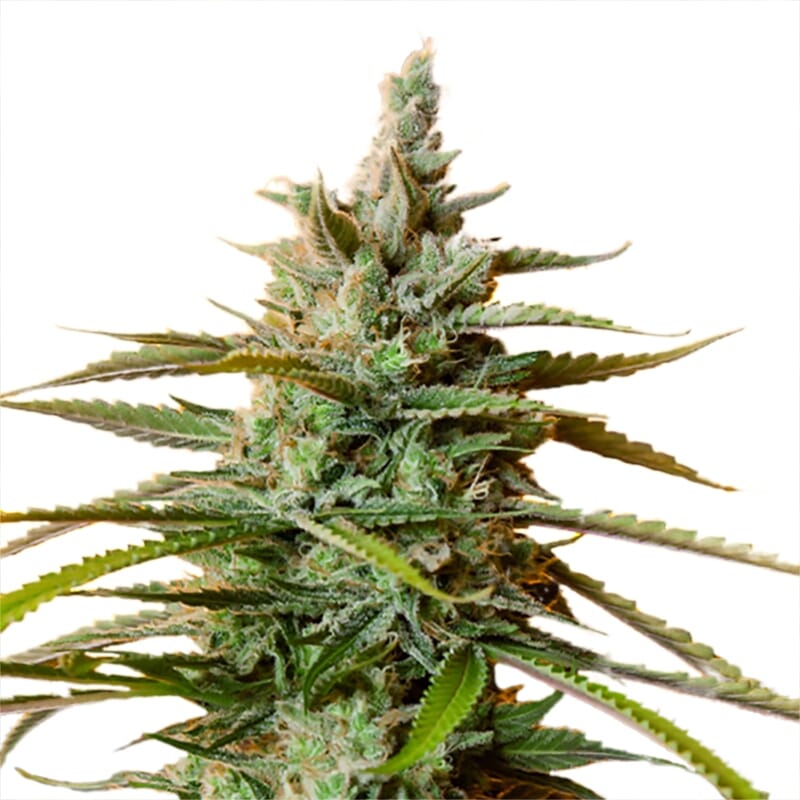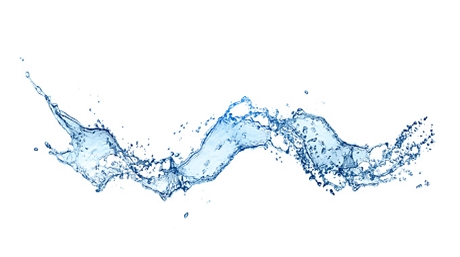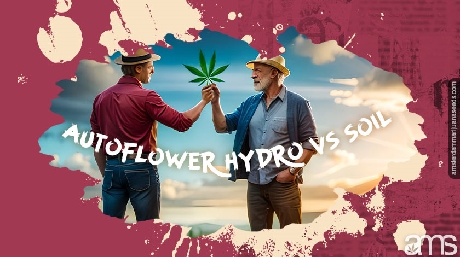Hydroponics is a popular method to cultivate cannabis.
While it continues to grow in popularity, growing marijuana hydroponically can seem intimidating to a newbie. If you’re a novice grower or unfamiliar with this method, it can feel like something out of a sci-fi movie.
Fortunately, you don’t have to go at this alone. We’ve put together a comprehensive guide on how to grow cannabis hydroponically. We’ll go over everything you need to know, tips you don’t want to miss, and mistakes to avoid.
By the end, we want you to feel confident about your next grow project. Without further ado, let’s dive into our complete guide on growing weed through hydroponics.
What does hydroponic mean?
First, what does the term “hydroponic” even mean? Well, the word “hydroponic” comes from the Greek words, “hydro,” meaning water, and “ponos,” meaning labor.
Together, hydroponics means the system of growing plants through the water.
Of course, this isn’t just through any water. Don’t plan on growing weed out of a water vase just yet. This is done through fertilizer and primarily water in a specific, nutrient-rich solution.
Hydroponic growing may be with or without artificial growing mediums, which we’ll touch more on later. Perlite, gravel, rockwool, sand, and even lava rocks are just a few examples. These mediums help provide mechanical support through the grow process. Again, we’ll touch more on that later in the guide.
Also, check out this video we created about DWC (deep water culture).
Why should you grow hydroponically?
The next big question you might have is: what do you need to get started? Before you run to the store, we want to make sure you’re fully prepared for the investment. Growing hydroponically requires specific conditions and factors. Be positive you have everything on hand before you start your grow.
When you provide your marijuana plant with exactly what it needs, when it needs it, and in the right amount, it will inevitably grow wonderfully. That’s the basic idea behind hydroponics, and why it’s such a popular method for growing dank bud.
Soil can be a tricky hurdle when you’re growing weed. Since soil essentially has an ecosystem of its own, it has constantly changing bacteria, nutrient variety, and pH. This can make it mightily difficult to grow cannabis in any sort of quality condition.
Hydroponics makes it easier to take control of every factor when growing. You can get specific with nutrients, water pH levels, and everything in between. As we dive further into this guide, we’ll be sure to mention which nutrients cannabis prefers.
No pressure, but it’s important to do your homework on what nutrients cannabis needs before you go in and set up your own hydroponic system. You’ll need to bring your A-game when growing hydroponics because you are then responsible for providing your plants with all the nutrients they need.
It can be a high-maintenance process. If you’re ready for it, though, the outcome will be more than worth it.
What makes hydroponic growing stand out
When plants are grown hydroponically, the nutrients are placed in the water to feed the plant’s roots directly. Unlike soil, this gives them a nutrient-powered advantage.
While soil-grown plants are also given nutrients, they’re not given in such precise, intense supplies. This is partially what makes the quality of hydroponic cannabis so superior.
The ability to feed roots directly is why hydroponic systems produce crops so much faster, too. Crops are found to grow at a much faster rate and produce greater yields.
In fact, a hydroponic plant can grow 30% to 50% faster than a plant grown in the soil. That’s even when they’re grown under the exact same conditions otherwise. Sold yet on hydroponics?
Roots of the plants that grow in soil have to constantly search for nutrients around them. When growing hydroponically, your plant’s roots don’t have to waste energy searching.
All that extra energy can then go into bud production instead. That sounds like another win-win situation for you.
4 Advantages to growing hydroponically
The costs of starting up a hydroponic system may be greater, at first, but many growers find it worth it. Overall, there seem to be more advantages to growing hydroponically compared to its disadvantages. And while it may be more pricy going in, the difference in quality is too noticeable to pass up for many.
1. More control
One of the most important things for hydroponic growers is to have control over their crops. With this method, the grower has more control over the health of their plants.
It makes sense to want to optimize and control the temperature, pH balance, bacteria and nutrients, and every other factor. When you have control over every step in the process, you can also control the outcome of your cannabis harvest that much easier.
2. No pests
Worrying about insects and other pests is a thing soil growers have to deal with. Growing hydroponically means insects and pesticides are a thing of the past for you. It’s literally a non-worry for those that prefer to grow with hydroponics!
3. Less maintenance
Though the setup for a hydroponic system can be very hands-on, the after is low maintenance. Overall, it requires less maintenance once it’s been set up. 1 reservoir can already feed more than 12 plants. Being able to monitor and control the pH balance also helps make maintenance a breeze.
4. More nutrients
Finally, let your plants enjoy more nutrients all around. The extra oxygen in a hydroponics system helps to stimulate root growth. Not only that, but it also allows the root to absorb nutrients even faster. When you choose to grow hydroponically, you’re creating a powerhouse for your plants to grow at incredible rates.
The cons of hydroponic growing
There are downsides to everything, so don’t fret too much. If growing hydroponically is what your heart is set on, these disadvantages may not even sound like a big deal. For many, the pros of growing through this method far outweigh the cons.
Root rot
Unfortunately, it’s easier to get root rot growing hydroponically than with any other grow method. However, this is simply if you don’t provide your plants with a good bacteria supplement. Ensure the ecosystem is clean and free of bacteria and you’re good to go.
More prep time
We’ve already mentioned this above, but you may not even consider it a true disadvantage. Hydro requires more preparation and setup than growing in soil, typically speaking.
However, you’re providing way more for the plant than you are in a soil grow situation. Of course, it’s going to take more time to prepare — but it’s going to be totally worth it.
How to grow hydroponically: Getting started
If you’re just getting started in the world of hydroponic growing, fear not. We’re here to help you get started!
For those of you just starting off in the wonderful world of hydroponics, a Deep Water Culture system may be the easiest, cheapest way to go. Keep in mind, however, that we’ll touch on other types of hydroponic growing systems as well.
DWC, or Deep Water Culture, has been around for over 100 years already. This type of hydroponics is tried and true. You can feel confident that it’s such a well-known and long-used method going in.
For the Deep Water Culture system, the idea is that you’re growing plants in aerated water. One of the easiest ways to get started growing hydroponically, you only need a few things:
- A container
- Container lid
- Pump
- And a net pot
In the container, you’ll place your nutrient solution first. This is normally about 3 to 4 gallons’ worth. Now, this is one of the simplest methods, so don’t expect a large harvest.
Once you place the lid on the container, it should be able to support a single plant that’s placed in the net pot. The roots are meant to grow out of the net pot, down into the nutrient solution.
An airstone is a crucial part of this system. Make sure you place an airstone in the container to keep bubbling the water. This increases oxygen levels and prevents the water from stagnating.
Stagnant water can cause root rot. Plus, it’s the perfect breeding ground for parasites. No thanks!
Each container you use this method for must be airtight. This helps prevent algae from growing on the inside. Now, you’ve got a quick idea as to how you should grow hydroponically for the first time.
More about the DWC system
If you’re itching for more tips on the Deep Water Culture system, we’ve got a whole blog post dedicated to the subject. Be sure to read through our Deep Water Culture system tips so you can understand even further.
Materials needed for hydroponics
Before we dig into other popular hydroponic growing systems, we want to give you an idea of everything you’ll need. Each of these systems will vary in difficulty. Some may not require everything we mention. Alternatively, some specific methods may involve something we don’t include. Here’s a quick list so you can start thinking about all you might need:
- Lighting (either LED or HPS lights)
- Lighting hangers or something to hang your light with
- Growing medium, like rockwool, perlite, coco coir, or others
- Grow tents or other housing areas
- Hydroponic reservoir or tray
- Pump and airstone
- Net mesh planting pots
- Carbon filter
- Oscillating fan
- Ventilation fan with ducting tubes
- PPM and PPM meters
- Hygrometer
- Hydroponic nutrients
- And of course, cannabis seeds
Next, we’ll provide some of the other most popular hydroponic growing systems. We’ll also quickly touch on how to use each method.
5 Popular hydroponic growing systems
There’s never just one way to do something. In fact, when it comes to hydroponics, there are many ways you can grow.
There are passive, static, open circuits, closed circuits, ebb and flood, and other popular hydroponic growing systems. Whichever you decide on will come down to your personal preferences.
Let’s touch on each hydroponic growing system so you can get a good idea of its main advantages and disadvantages.
1. Passive growing systems
A passive hydroponic growing system usually consists of a pot or container that’s filled with some sort of substrate. The plant either sits in a nutrient solution or it’s watered by hand at regular intervals.
A pot is filled with substrate, like gauze, for example. The gauze filled with nutrients helps the container retain nutrients easier. This system then allows the nutrient solution to be drained and distributed into the root system of the plants.
2. Static growing systems
Then, there are static growing systems, which are similar to the first one we mentioned above. They’re a great choice for growers looking to save money in their grow-operation. However, there are disadvantages to using this system.
First, the roots can potentially be damaged using this system. As the water doesn’t circulate on its own, stagnant water puts your plants at risk. In fact, this system can cause the roots of cannabis plants to be damaged most easily.
Though it’s one of the cheapest, easiest methods growers can do in their homes, it’s not the most efficient. There’s a higher risk of your plants growing mold, fungus, and other bacteria.
However, everyone has to start somewhere! While it’s not ideal for a massive crop of plants, it may be exactly the starting point you need. It deserves a mention because it could be the only option for certain growers interested in trying hydroponic systems.
3. Open circuit systems
Used more by professionals and large-scale growers, we still wanted to mention open-circuit systems. They’re powerful, quick methods that carry quite a heavier startup cost. Open-circuit grow systems require heavy amounts of fertilization, creating a lot of waste. For small-scale growers, it certainly doesn’t seem like a feasible option.
Those that do use this system often grow using rockwool and/or coconut fiber as their substrates. This is because of their low permeability. That means they’re able to hold a ton of nutrients and minerals, which are then flushed out regularly through the water.
A high volume of water is required for this method, too. It’s the amount of heavy water retention and quantity that needs to be cycled that makes it an inopportune option for novices. Amateur growers ought to steer clear of open-circuit systems.
Over time, you may feel more confident about meticulously measuring cycles, examining numbers, and ensuring there’s no room for error. Only experience in growing will give you the knowledge to take on a bigger project of this size.
4. Closed circuit systems
On the opposite end of the spectrum is our closed-circuit systems. However, the principles involved are still fairly similar. Plants are irrigated using a nutrient solution. This solution then circulates through the roots, is gathered in a trough, and cycled again.
Because the system is closed, though, this method causes significantly less waste. Clay pellets or perlite are more common substrates for this option.
If you don’t like wasting nutrients, a closed-circuit system is likely your best option. You can simultaneously be ecologically and economically sound with your decision on this one.
5. Ebb and flood systems
One of the most popular hydroponic systems is the Ebb and Flow system. It’s also known as the Flood and Drain system.
For this setup, you’ll need flood tables and pumps to feed the plants water and nutrients. You’ll also need water reservoirs, as well as a growing medium, like rockwool.
Using this method includes soaking the plant’s roots in the nutrient solution for a period of time. Then, you drain the solution to leave the roots out in the open air. This process should be repeated multiple times throughout the day.
Some growers even put their pumps on timers so they can keep track of when to flood the tables and when to drain the solution into the reservoir again.
Others prefer to drain the nutrient solution and put in a new one each time it’s drained. We don’t personally recommend this one, as you’re wasting nutrients each time you drain and replace it. Everyone has their own preferences, but you can make the most out of your nutrients by not replacing them each time you drain your plants.
The good part about this system is that the water doesn’t stay stagnant for long. This prevents parasite infestations and prevents root rot from occurring.
What are the best nutrients for hydroponic marijuana growing?
We’ve gotten to touch on a lot in this guide. So far, you now know why people prefer hydroponics. We learned more about various grow systems and why different people use them. You even got some insight into both the pros and cons of using this popular method.
Now, though, it’s time to bring light to another important aspect of growing hydroponically. What nutrients are best? Allow us to give you that knowledge, too!
Of course, as a side note, you can also just purchase hydroponic nutrient solutions. Some solutions should specify that they contain all required substances for both the vegetation and blooming periods.
However, even if you choose a solution that does it all for you, it’s necessary to keep a lookout for your plants. Your herbs can still face deficiencies if the pH balance is not correct. When the pH moves to an undesirable range, your plants can start to function improperly.
You can spot a deficiency first based on the color of their leaves. If your cannabis plant’s leaves have started to yellow, it may be lacking nutrients. Conversely, your plant may not be absorbing all the essentials that it needs.
Potassium
In the early growth phase, your plant requires potassium to grow. This helps enhance its protein production, which then improves its flowering process. Vitamin K is vital for overall plant growth. It even goes so far as to help move nutrients and water into the tissues of the plant!
Nitrogen
Next, nitrogen is one of the most essential elements in the world. In cannabis plants, it helps build proteins, enzymes, and chlorophyll. This helps the plant grow, since chlorophyll is responsible for photosynthesis.
How much nitrogen you need to give your plant depends on the room temperature it grows in. You’ll need more nitrogen if you’re growing in a room below 80 degrees Fahrenheit.
If it’s warmer, you can typically use less nitrogen. Regardless, nitrogen is a requirement for the vegetative phase of cannabis growth.
Phosphorus
Next, cannabis converts solar energy into chemical energy thanks to phosphorus. It’s also essential during the flowering phase as it boosts the immune system of your plant.
In fact, because phosphorus plays a role in the plant’s flavor and taste, you can add a lot during the flowering stage.
Sulfur
It’s a smelly element, but a necessity regardless. Sulfur helps in root growth and seed production, so it’s absolutely crucial. Without it, you wouldn’t be able to have plants with a healthy production of enzymes and proteins.
Calcium
You may be familiar with how calcium helps our bones and other parts of our body. A miracle element, plants also get strength from calcium. It also helps in nutrient transportation within the body of the plant.
Magnesium
Chlorophyll contains magnesium in order to even be chlorophyll in the first place. So, if you want a normal growth process, you’ll need to fit magnesium into your plant’s diet.
Trace elements, or microelements
Finally, there are an array of other elements that also help in the overall growth of cannabis plants. If you’re skeptical about your nutrient concentration combination so far, this is where the microelements can play a part.
It’ll depend on each situation for which trace elements should be included in the solution. Only time, experience, and testing will give you this knowledge.
Time to expand your horizons
Now is as good a time as any to finally get started on growing hydroponically. If you’ve gotten this far into our guide, maybe you should take this as a sign that it’s time for you to give it a try. You’re not such a novice anymore!
The only way your expertise can grow is by doing, though, so have at expanding your horizons. Hydroponic systems are a great place to start. You’ll be impressed with your hydroponic garden after seeing the difference between growing in soil and growing hydroponically.
If you do decide to give it a try, then make sure you have the budget to get started. Once you’re financially capable of covering the costs and you’re confident in the knowledge, nothing can stop you from growing hydroponically now!
If you do decide to give it a try, then make sure you have the budget to get started. Once you’re financially capable of covering the costs and you’re confident in the knowledge, nothing can stop you from growing hydroponically now. Check out our grow guide for more advice and tips on how to get started.















